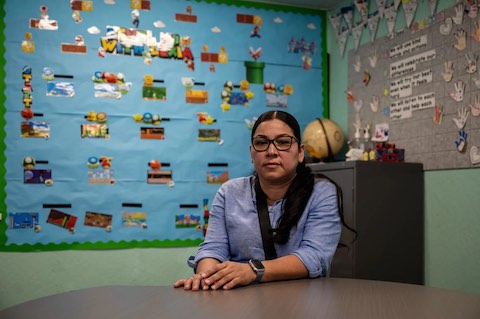
17 Jun Attachment to Family Key to Better Aging of Latinos in U.S.
PHOENIX, Ariz.–When Beatriz Guerrero immigrated to the United States in search of the “American dream”she immediately faced a very different reality: a new and unknown country where a language she did not understand was spoken.
Poverty and lack of opportunities expelled her from Mexico at age 58. Accompanied by her two daughters, Guerrero decided to immigrate to Phoenix, where her sisters, nieces and other relatives already lived. They promised she could begin a new life here, and over time she adjusted to her new residence.
“It would have been impossible to survive and to adapt to this country, to move forward and fulfill my goals without the emotional and economic support from my family,” she said.
Learning U.S. Rules and Culture
Since her arrival in the U.S., Guerrero was totally dependent on the help of her family to translate employment applications, show her how to establish herself and learn the rules and laws in this country. “I felt the enormous cultural difference, but I needed to adapt to my new circumstances, so the help and advice of my relatives was essential,” she added.
Years after her arrival, Guerrero revealed that she continues to live surrounded by her family, and for that reason she is confident she can age successfully in this country.
According to Elise Hernandez, a doctoral candidate at the University of Michigan’s School of Social Work, the presence of familismo in Latino families promotes frequent contact, connection and relations among its members bringing a sense of wellbeing that favors the aging process of Hispanics living in the U.S.
She explained that her study of 626 Hispanics age 50 or older demonstrated that the sense of familismo provides them strong identification and attachment of Hispanics to their immediate or extended families. That, in turn, follows a traditional value system that prioritizes family relationships as sources of identity and well being.
“By familismo, Hispanics behave in a certain way and maintain frequent contact because they feel that it’s the way they should behave throughout their life, always taking care of the family, especially the children and the elders,” Hernandez said.
Hernandez and other researchers have found a strong connection between close family relationships and aging well. That’s because older Latinos with a high degree of familismo receive more support, are less isolated and have more family bonds.
Positive–But Complicated
Among participants in Hernandez’ study, 80 percent live with or near their families. Regarding Hispanic residents in the United States, she said, “It is a very complicated issue, because although the familismo is generally positive, it can also become a great source of disappointment.”
Hernandez, who presented her findings last fall at the annual meeting of the Gerontological Society of America, said that although Latinos generally maintain family closeness, different factors determine how well they can do so.
She stressed a person’s ability to establish familismo and maintain family ties depends on such factors as the family’s financial situation, the country they come from, where they live in the U.S. (and whether they move from that city) and their English-proficiency level.
“You have to wonder how much of the habit of conserving family closeness and how much they are are failing to comply if their home changes, the familismo practice changes,” said the University of Michigan researcher.
However, a 2014 analysis by researcher Casie L. Peet of 26 studies on the potential protective benefits of familismo, showed that it had little or no effect against such areas as depression, suicide and substance abuse.
The U.S. Census Bureau projects that the Hispanic population ages 65 and older will quintuple between 2012 and 2050, growing from 3.1 to 15.4 million. As the century progresses, these elders will play an increasingly important role in America.
Yolanda González Gómez wrote this article in Spanish for La Opinion and provided theEnglish translation to New America Media (NAM). She wrote it with support from the Journalists in Aging Fellowship, a program of NAM and the Gerontological Society of America, sponsored by the Archstone Foundation. It is also available on the website, NAM en Español.







No Comments